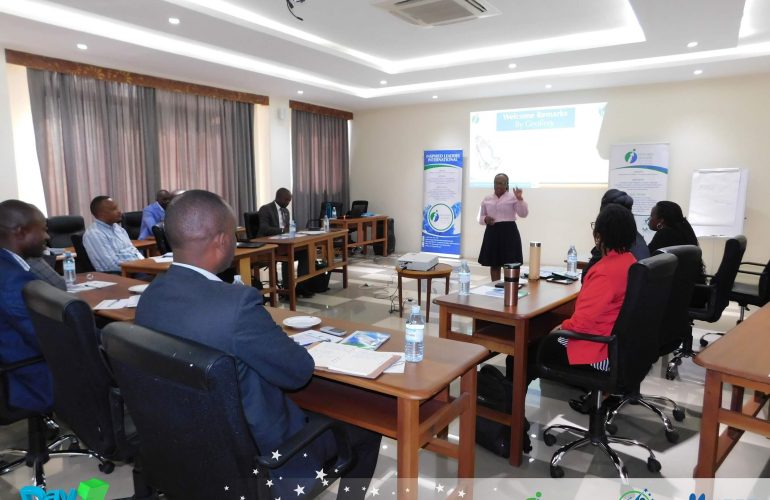Of recent, I talked to a friend who works with some organization. In our conversation, he told me how they’ve been undertaking some tiresome project simply because someone offered to sponsor it. This was a project that was originally outside their organizational vision and mission. “When we saw that there were funds for it, we embarked on it,” he intimated to me.
This questions such an organization’s credibility to handle such a project. It puts the leaders therein in an integrity microscope and finds them very wanting. It leaves one wondering whether the purpose for the organization’s existence is to look for money and see what to use it for or to identify the society’s needs and look for money to meet those needs! Resting on one of the two options above will clearly bring out the underlying fact about whether that organization is surely transformational or merely transactional.
Transformational Organizations
i. Transformational organizations are keen to first conduct a situational analysis in order to identify a pressing need that should be addressed. (This goes without saying that such a need should be relevant and/or in line with the organization’s vision, mission, goals and objectives.)
ii. When that need is clearly defined, relevant goals and objectives are laid down. These objectives are the target achievements that summarily will solve the problem at hand. They answer the question, “What needs to be achieved in order for the need to be addressed?”
iii. Strategies are then laid out. These are the approaches or methods and/or activities that are employed to achieve the objectives. They answer the question, “What shall we do to achieve our objectives?”
iv. Thereafter, the PARTNERS – individuals, organizations or institutions – are identified. These are the ones that join hands in one way or the other to support or enable the accomplishment of the mission. They answer the question, “Who is relevant and instrumental in helping us achieve our objectives?”
v. Evaluation tools are identified i.e. from what shall you come to conclude that you’ve addressed the need and accomplished the mission. These can also be called the assessment procedures – both formative and summative. They answer the question, “How shall we know that we’re making progress or that we’ve now achieved our objectives?”
vi. A budget is then made, clearly explaining how each item thereon contributes to mission accomplishment. This answers the question, “How much money is needed to accomplish the mission?”
vii. Thereafter, the sources of income can then be identified and funds looked for. This answers the question, “From where shall this needed money come?”
After all the above questions have been answered, the organization swings into action to address the need.
Transactional Organizations
On the other hand, however, Transactional organizations are just that – transactional! They are simply in business. They exist simply to make money. They’re all eyes wide open looking here and there for the next source of funds to plan for! They’ll thus do all they can to squeeze and “underutilize” the money they get in the name of leveraging. They’ll avail wrong accountabilities to their funders. To them, financial accountability is not about explaining how the money was used. To them, it means explaining how the money was supposed to be used, giving the explanation a language that makes it look like it was how the money was actually used! If it means forging receipts and signatures, they’ll do so. If it is overestimating the costs of different services and purchases, they won’t hesitate to do so. Anything that will add a penny into their personal pockets will be given the highest priority ever. That’s why they look for funds and then plan what to use them for. They do not identify what needs to be done, and then go to look for funds to do it. The reverse is true.
Bottom Line
First, excellent leaders should look at the need before the fund. Their whole zeal is dedicated towards addressing a dire need. Because of the compassionate attachment they feel in their hearts towards the identified need, they go out of their way to look for funds that can fulfill the unselfish dream. They do not camouflage under the organization to enrich themselves. They rather give the organization a chance to address the needs of the society vis-à-vis the organization’s vision, mission, objectives, and scope of operation.
Second, our organizational visions should not be limited by money. Our visions should limit the money needed. We should not say, “How much is available so that we can plan for it?” We should instead say, “How much is needed for this vision to come to pass?” There, the remaining task would be how to get the required money. While the former restrains us from reaching the highest point we can ever reach and be the best we can ever be, the latter liberates our minds to be stretched to our highest potential and swings us out of our comfort zones to reach out and physically paint our mental picture.
Third, leaders of organizations must work at achieving their visions and not doing things out of the blue – things that even do not help to achieve the organization’s vision. They should not do things because there’s money specifically voted to undertake those things. They should do them because they’re a need that should be addressed. We should not cry when money is there but can’t be used; we rather should cry when needs are numerous but can’t be met!




